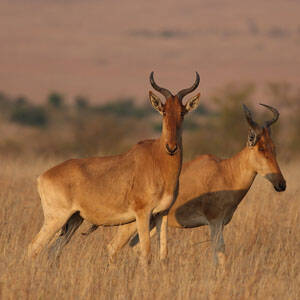
Red Hartebeest (scientific name: Alcelaphus buselaphus) is also known as Red Hartebeest in foreign languages. The Red Hartebeest and the Zambian Hartebeest were once independent species. In 2013, they were classified as subspecies of the Hartebeest. So far, the Hartebeest genus has only one species,...
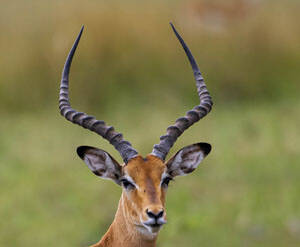
Impala (scientific name: Aepyceros melampus) is also known as Impala and Common Impala in foreign languages. There are 6 subspecies.Impalas live on grasslands and thick bushes. They do not migrate and like to live in groups, usually between 15 and 60. The size of the herd forms a certain social stru...
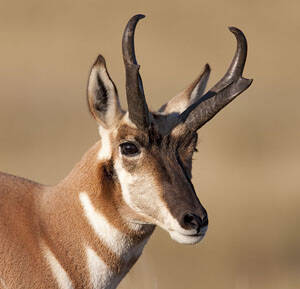
Pronghorn (scientific name: Antilocapra americana) is also known as pronghorn in foreign languages. There are 5 subspecies.Pronghorn likes to live in groups. In summer, they form small groups of about 50-100 people, and in winter, they gather into large groups of thousands of people. When encounteri...
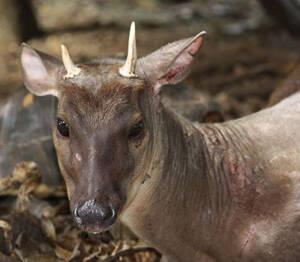
Red Brocket (scientific name: Mazama americana) is called Red Brocket in English, Corzuela Colorado and Corzuela Roja in Spanish, and Veado-mateiro in Portuguese. There are 12 subspecies.Red Brocket is active during the day and at night, and often appears alone. The habitat they live in is conducive...
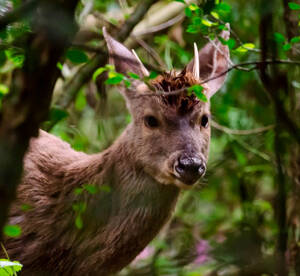
Gray Brocket (scientific name: Mazama gouazoubira) is called Gray Brocket and Brown Brocket in English, Cabra Silvestre, Corzuela Común, Corzuela Parda, Guazu, Guazu Virá in Spanish, and Corça and Veado-catingueiro in Portuguese. There are 11 subspecies.In the captive study area, the home ranges...

Chilean Huemul (scientific name: Hippocamelus bisulcus), also known as Patagonian Huemul, is an endangered animal, one of the two species of the genus Hippocamelus, with no subspecies.Chilean red elk is a gregarious species. The number of elks in a gregarious group depends on the situation. It is us...
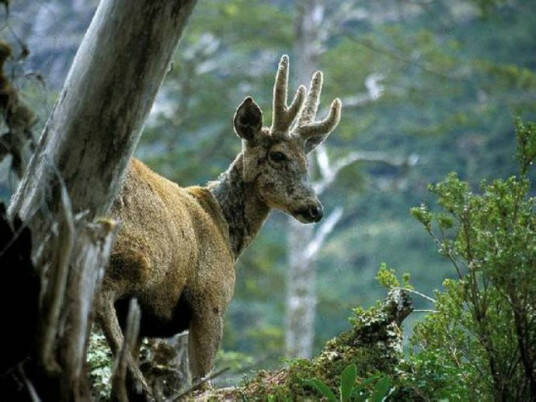
The Peruvian horse moose, whose scientific name is Hippocamelus antisensis, is the most prosperous subfamily of the deer family and the most prosperous group of ungulates except the bovidae. Their bodies are stout and their limbs are short. During the summer, they inhabit high altitudes, gradually m...
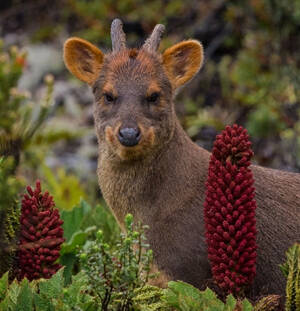
Chilean Pudu (scientific name: Pudu puda) is called Southern Pudu in foreign language. It is the smallest deer in the world and has no subspecies.Chilean Pudu is a diurnal animal, but it is more active in the afternoon, evening and morning. It will go to open places to forage. The food is leaves, br...
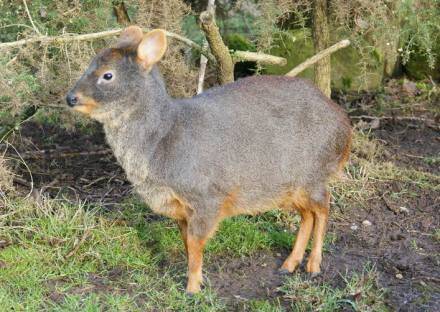
Pudu mephistophiles (De Winton) is also known as the northern Pudu deer.Pudu mephistophiles mainly eat understory plants in moist forests, including ferns and leaves. Because their food is full of water, they rarely drink water. They defecate in the same place, forming a pile of dung, which may be u...
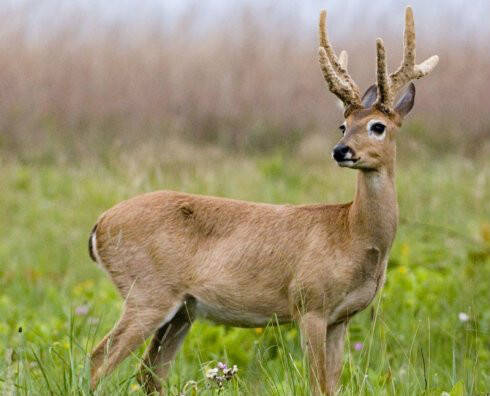
The scientific name of the steppe deer is Ozotoceros bezoarticus, which is an endangered deer species unique to South America. In spring, they often gather in small groups of 3 to 5, and live alone or in pairs in winter. It is small and looks unremarkable. However, the male steppe deer has developed...

The South American Swamp Deer (scientific name: Blastocerus dichotomus), also known as the swamp deer, is the largest deer in South America.The South American Swamp Deer is solitary or lives in groups of less than 6, but this changes according to the season and specific circumstances. They do not fo...
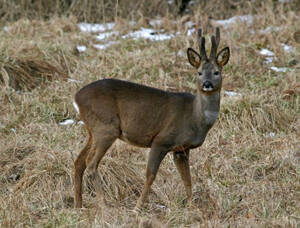
Siberian roe deer (scientific name: Capreolus pygargus) is also known as Siberian Roe Deer, Eastern roe deer, and Siberian Roe. It has four subspecies. It is one of the two species in the genus Capreolus, Cervidae, and is listed alongside the western roe deer.Siberian roe deer are alert, with keen s...

Western roe deer (English: western roe deer, scientific name: Capreolus capreolus), also known as European roe deer, mainly lives in mountains and is rarely seen in plains or islands. There are 5 subspecies.The western roe deer is often active in the evening. It mainly moves in and out of the forest...

Reindeer (scientific name: Rangifer tarandus) is called Reindeer in foreign language. There are 17 subspecies. Also known as horned deer, it is the only animal under the genus Reindeer in the family Cervidae.The most amazing behavior of reindeer is the annual migration of hundreds of kilometers. As...

Barasinga (scientific name: Rucervus duvaucelii) is also known as Barasinga and Swamp Deer in foreign languages. It has three subspecies.Swamp deer are herbivores, feeding mainly on grass and aquatic plants, and also eating sugar cane, reeds and crops. The activity time is mainly concentrated in the...

Rusa timorensis (scientific name: Javan Deer, Javan Rusa, Rusa, Rusa Deer, Sunda Sambar, Timor Deer, Cerf de Timor in French, Sambar de Java in Spanish, Mähnenhirsch in German, with 7 subspecies.Where hunting or other disturbances are not a big problem, ibex are primarily nocturnal, gathering in la...
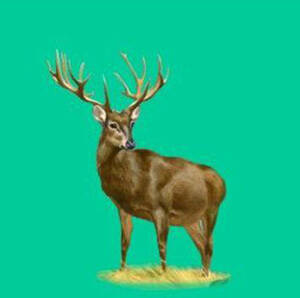
Schomburgki (scientific name: Rucervus schomburgki) is a species of deer native to Thailand. It is the only species of red deer that does not migrate. This is because they live in the tropical rainforest in southwestern Thailand, where vegetation is lush all year round and they can get enough food w...
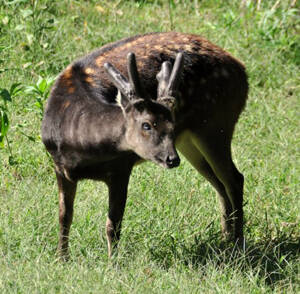
Philippine sambar deer (scientific name: Rusa alfredi) English Philippine Spotted Deer, Prince Alfred’s Spotted Deer, Visayan Spotted Deer, German Prinz-Alfred-Hirsch, no subspecies.Philippine Sambar Long overlooked as an obscure and poorly known regional variant of the widely distributed sambar de...
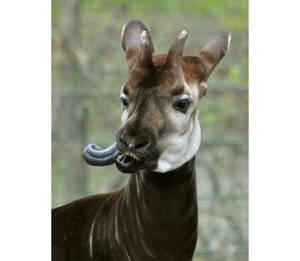
Okapi (scientific name: Okapia johnstoni) is called Okapi in English. At first glance, it looks more like a horse. Because of the alternating black and white stripes on its back, it looks very much like a zebra. In the past, some people thought that the okapi was the result of the mating of a giraff...
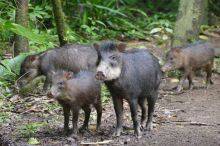
White-lipped Peccary (scientific name: Tayassu pecari) has 5 subspecies.White-lipped Peccary is active both during the day and at night, but is mainly nocturnal. They are a nomadic species, always looking for food and water. Living in groups, their estimated home range is between 60-200 square kilom...